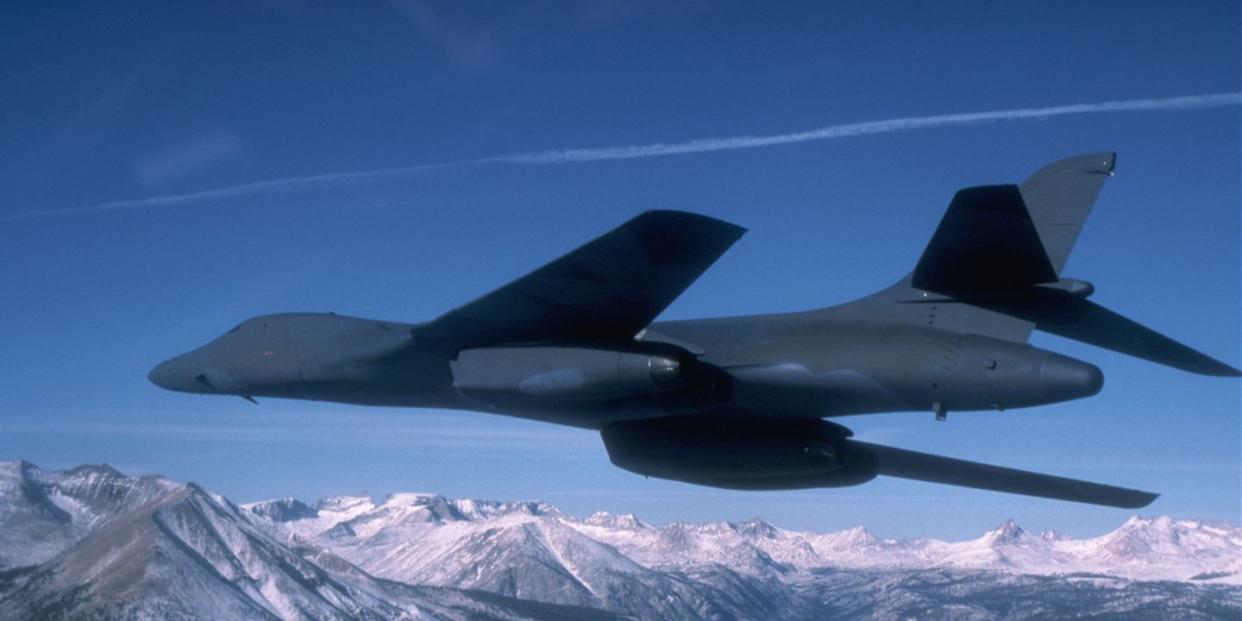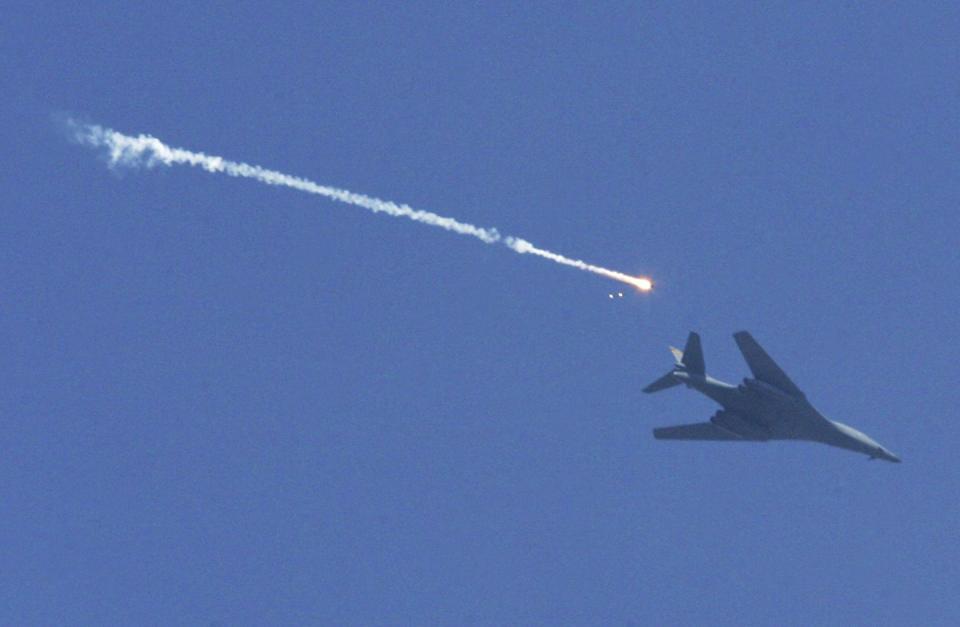The Aging B-1 Bomber Can No Longer Fly Like It Used To

The B-1B Lancer heavy bomber was originally built in the 1980s.
The B-1B was built for low-level flight, flying beneath radars to bomb targets deep behind enemy lines.
Wear and tear to the airframes from decades of flight means the Air Force may restrict the B-1s from flying low.
The U.S. Air Force may soon have to restrict one of its bombers from a key mission profile: flying low. The B-1B Lancer bomber fleet is growing old and the Air Force is considering restricting its ability to fly low, which is reportedly hard on the aircraft, in order to keep the big airplanes flying.
The B-1B bomber was built during the 1980s as a heavy strategic bomber to fight a nuclear war. The B-1B was designed to use its anti-radar stealth design to penetrate Soviet territory, launch nuclear-tipped cruise missiles, and drop bombs before returning home. The bomber was also designed to fly fast at low altitude—below enemy radars—to evade detection.

A lot has changed since the end of the Cold War. For one, the B-1B was stripped of its ability to launch nuclear weapons, and today is primarily a long range conventional strike aircraft. It was an unexpectedly popular close air support aircraft during the war in Afghanistan, where the B-1B’s long legs, big bomb payload, and ability to pour on the speed was used to support troops in contact.
Now, according to Military.com, the Air Force is reckoning with decades of low-level flight that has stressed the bomber airframes. In order to keep the planes flying until the mid-2030s, the Air Force may restrict them from low-level flight. The Air Force would like to keep the B-1B around, at least until the B-21 Raider bomber starts coming off the assembly line in the late 2020s. Ideally, the Air Force would like to keep the jets around until 2036.
The U.S. Air Force currently flies 60 B-1B Lancers, the last of which was delivered in 1988. The bomber has a crew of four and a top speed of Mach 1.2. The bomber can carry up to 24 2,000 pound bombs. Alternately the B-1B can carry 24 Joint Air Surface Standoff Missiles (JASSM), which two bombers delivered in the April 2018 NATO strike against chemical weapon facilities in Syria. It can carry up to 15 500 pound GBU-54 GPS-guided bombs. The B-1B can also carry the new Long Range Anti-Ship Missile (LRASM) and lay a minefield consisting of Quickstrike naval mines.
Source: Military.com
You Might Also Like

